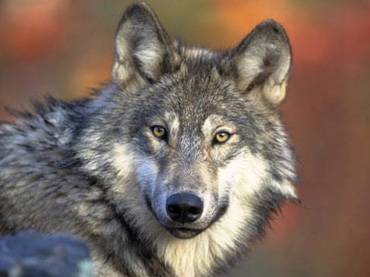Wolves are majestic creatures of the wild and are known to be the largest members of the canine family. They are not advised to be domesticated in any way and are territorial by nature. They are also known to be fierce predators and are nocturnal. There are different classifications of wolves, but the most common are the gray wolf, red wolf, and the coyote.
The most widely known among this classifications is the gray wolf, particularly its subspecies the timber wolf. Timber wolves grow up to 3 feet wide (maximum size for males) on the shoulders and up to 4 feet long excluding the tail.
Another member of the wolf family is the red wolf, but compared to their cousins, they happen to be critically endangered because of habitat destruction and hunting. So to explore more interesting facts about these fascinating creatures, check out the information below.
See video at the end


Habitat and Routines

A few wolves have been spotted in Europe, but a good chunk of their population thrive in North America (namely Alaska and Canada), Asia (Middle Eastern countries like Syria, Jordan, and Mongolia) and North Africa. Among the countries on the list, only those in Asia have no precise recordings of wolf populations.
As many people are already aware of, wolves come in packs of about six to ten, but according to records, they can rise up to 30 members. The pack consists of one male or better known as the alpha male, numerous females, and their young. Together, the pack hunt and cooperate with each other to catch large prey. Amazingly, though, only the alpha male and his mate breed while the others are tasked with guarding.
Wolf Pups


Pups, or young wolves, are born after a nine week gestation period. A female wolf can give birth to up to a litter of 11 pups. They are helpless when they are young; thus, all the adults of the pack are tasked to protect them at all costs. At around two weeks old, they will begin to open their eyes and are more physical at that age. They officially are allowed to leave their den after they turn ten weeks old and live with the rest of the pack. But during this time, their mother still needs to feed them food coughed out of her mouth.
By the time the pups reach six months, they join the pack in hunting. Their task is to chase the prey down before the adults make the kill. Pups are officially adults at two years old, and they either stay in the pack or mate with other wolves to form their own.
